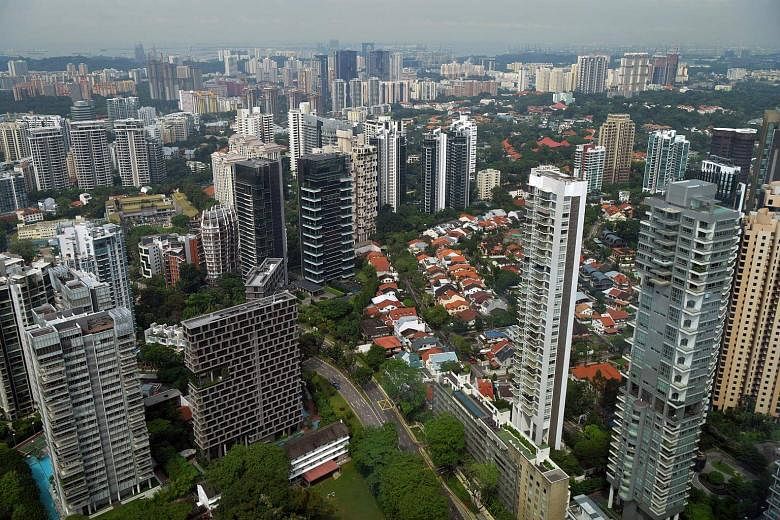More development sites will be available to meet the demand for land from developers keen to capitalise on a recovering property market.
But analysts warn that the slight uptick in supply for the next six months may not be enough to satisfy developers, who have been aggressively bidding for sites recently.
There are 16 sites on the Government Land Sales programme for the second half of the year. These can yield up to 8,125 private homes, up from the 7,465 units offered in the first half, the Ministry of National Development said yesterday.
It noted that there is a need for more residential sites to ensure there is an "adequate pipeline supply of new private housing units to meet the needs of our population", given that the demand for new homes has continued to rise in recent months.
Market watchers described this latest allocation as "conservative" and possibly inadequate to meet developer demand.
Mr Ong Teck Hui, national director for research and consultancy at JLL, said: "Given the demand crunch for residential sites, developers could be steered towards triggering sites on the reserve list as well as sourcing from the collective sale market."
Six of the sites are on the confirmed list. Four are for residential - in Chong Kuo Road, off Sembawang Road; Handy Road in the city; Hillview Rise; and Sumang Walk, which is for an executive condominium. There are also two mixed-use sites, in Holland Road and Sengkang Central.
In total, the confirmed-list sites can accommodate 2,840 private residential units - up by 22 per cent from this half of the year - and 26,800 sq m gross floor area of commercial space.
Said Cushman & Wakefield research director Christine Li: "The increase of merely 22 per cent... reflects a mixed view on the turnaround of the residential segment and the strength of the recovery."
But Mr Wong Xian Yang, head of research and consultancy at OrangeTee, said: "Releasing too much land at one go may jeopardise the current stability in the property market, in view of persistent headwinds such as rising interest rates, cooling measures and uncertainties in the global economy."
The reserve list has 10 sites - nine private residential and one commercial. They can accommodate 5,285 private homes and 56,790 sq m gross floor area of commercial space, mostly for office use.
Confirmed-list sites go on sale regardless of interest, while those on the reserve list are launched only when a developer commits to an acceptable bid.
Analysts say the private residential sites in Jiak Kim Street, Fourth Avenue and Cuscaden Road on the reserve list are the ones most likely to interest developers, owing to their prime locations. "These offer very palatable quantums and are expected to set new benchmarks," said Mr Desmond Sim, head of CBRE Research for Singapore and South-east Asia.
Recent tenders have attracted audacious bids, with a 99-year leasehold residential site in Stirling Road crossing the $1 billion mark.
Such bullish bids are not likely to abate in spite of the modest increase in land supply, particular for plum plots in Handy Road, Holland Road and Sengkang Central.
Dr Lee Nai Jia, head of research at Edmund Tie & Co, said: "There is still much capital in the market and we are likely to see more joint ventures between developers and funds. This is especially so for sites that include a retail component."
Developers are likely to continue to dip into the collective sale market to shore up their land banks. Four collective sale transactions - One Tree Hill Gardens, Goh & Goh Building, Rio Casa and Eunosville - were closed in recent months for a combined outlay of $1.5 billion.




